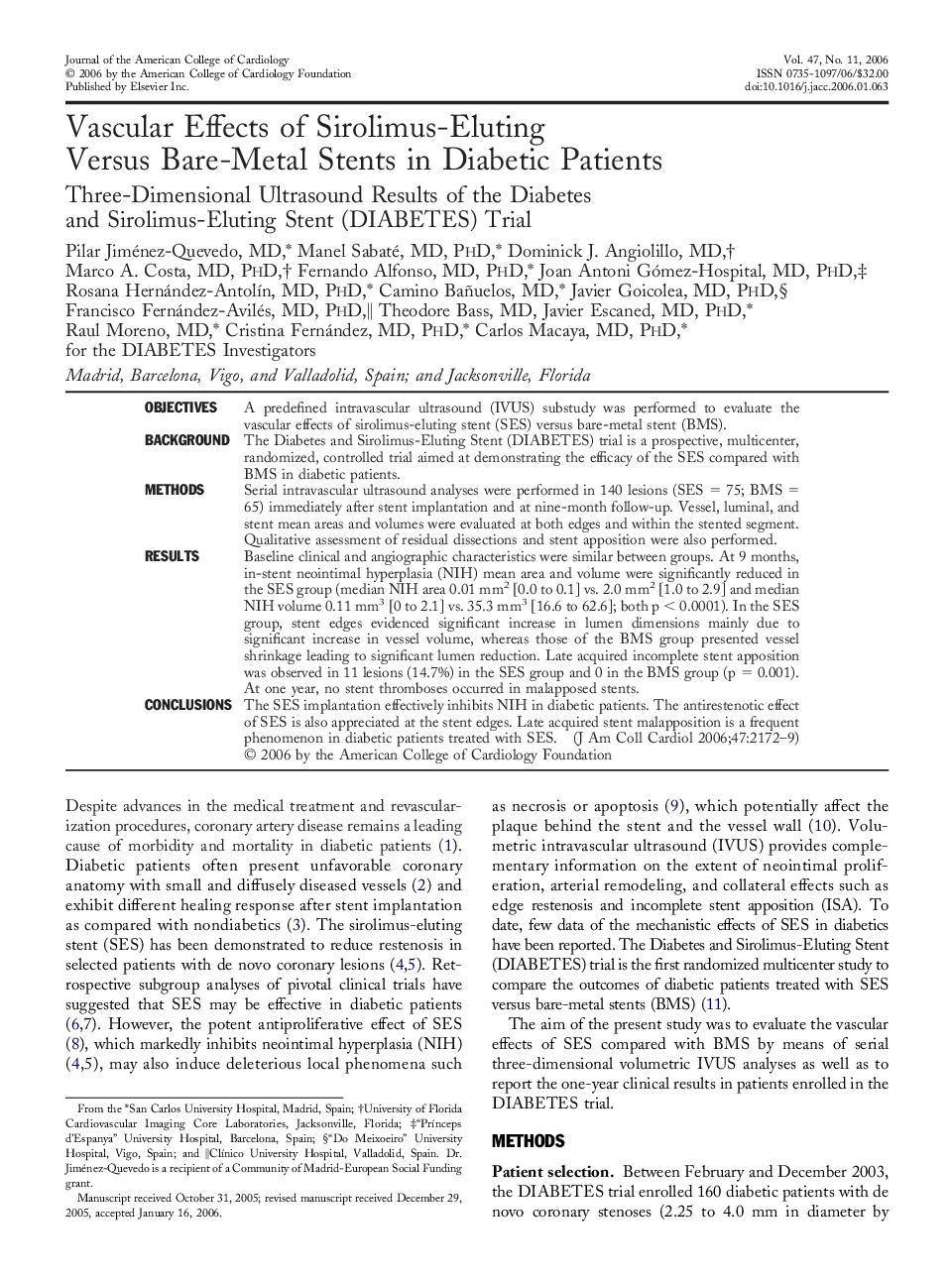| Article ID | Journal | Published Year | Pages | File Type |
|---|---|---|---|---|
| 2954153 | Journal of the American College of Cardiology | 2006 | 8 Pages |
ObjectivesA predefined intravascular ultrasound (IVUS) substudy was performed to evaluate the vascular effects of sirolimus-eluting stent (SES) versus bare-metal stent (BMS).BackgroundThe Diabetes and Sirolimus-Eluting Stent (DIABETES) trial is a prospective, multicenter, randomized, controlled trial aimed at demonstrating the efficacy of the SES compared with BMS in diabetic patients.MethodsSerial intravascular ultrasound analyses were performed in 140 lesions (SES = 75; BMS = 65) immediately after stent implantation and at nine-month follow-up. Vessel, luminal, and stent mean areas and volumes were evaluated at both edges and within the stented segment. Qualitative assessment of residual dissections and stent apposition were also performed.ResultsBaseline clinical and angiographic characteristics were similar between groups. At 9 months, in-stent neointimal hyperplasia (NIH) mean area and volume were significantly reduced in the SES group (median NIH area 0.01 mm2[0.0 to 0.1] vs. 2.0 mm2[1.0 to 2.9] and median NIH volume 0.11 mm3[0 to 2.1] vs. 35.3 mm3[16.6 to 62.6]; both p < 0.0001). In the SES group, stent edges evidenced significant increase in lumen dimensions mainly due to significant increase in vessel volume, whereas those of the BMS group presented vessel shrinkage leading to significant lumen reduction. Late acquired incomplete stent apposition was observed in 11 lesions (14.7%) in the SES group and 0 in the BMS group (p = 0.001). At one year, no stent thromboses occurred in malapposed stents.ConclusionsThe SES implantation effectively inhibits NIH in diabetic patients. The antirestenotic effect of SES is also appreciated at the stent edges. Late acquired stent malapposition is a frequent phenomenon in diabetic patients treated with SES.
